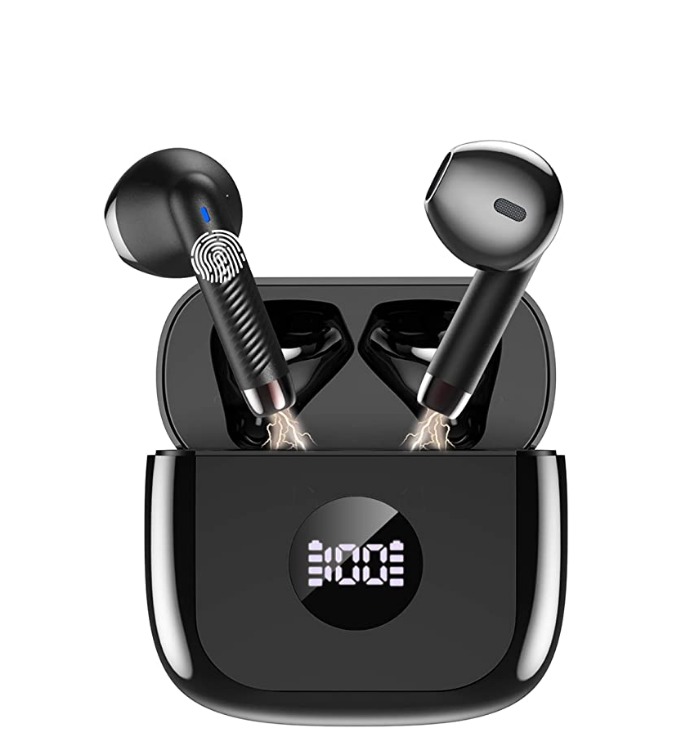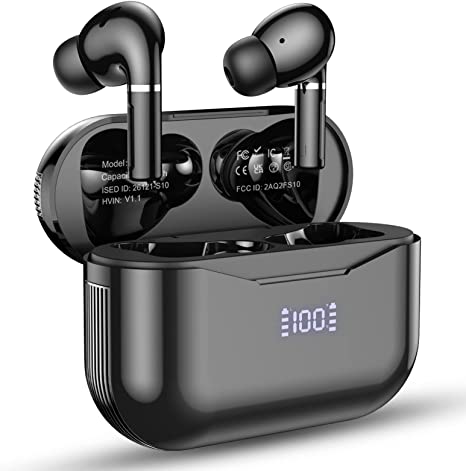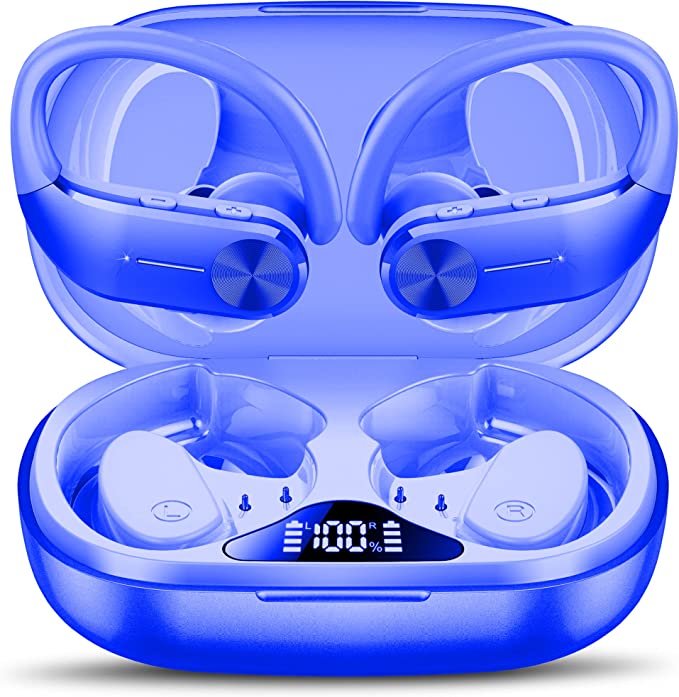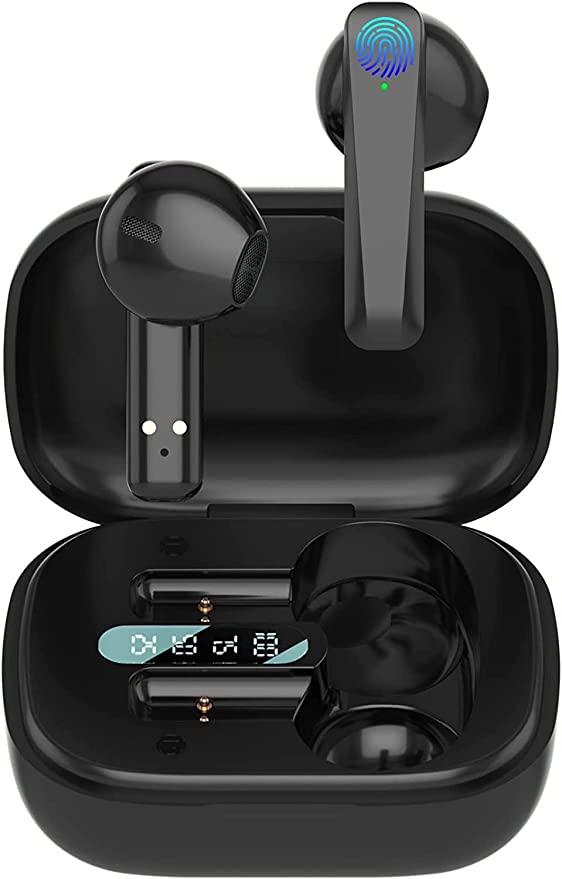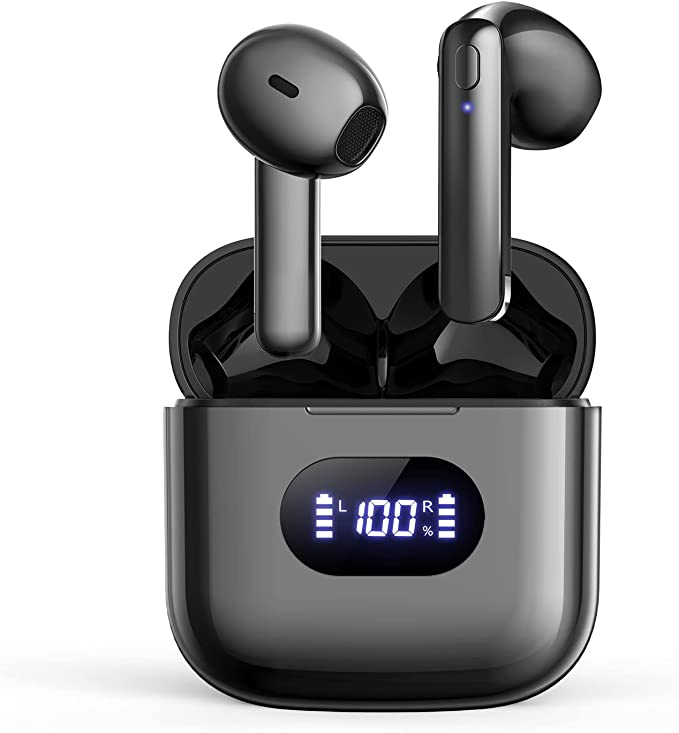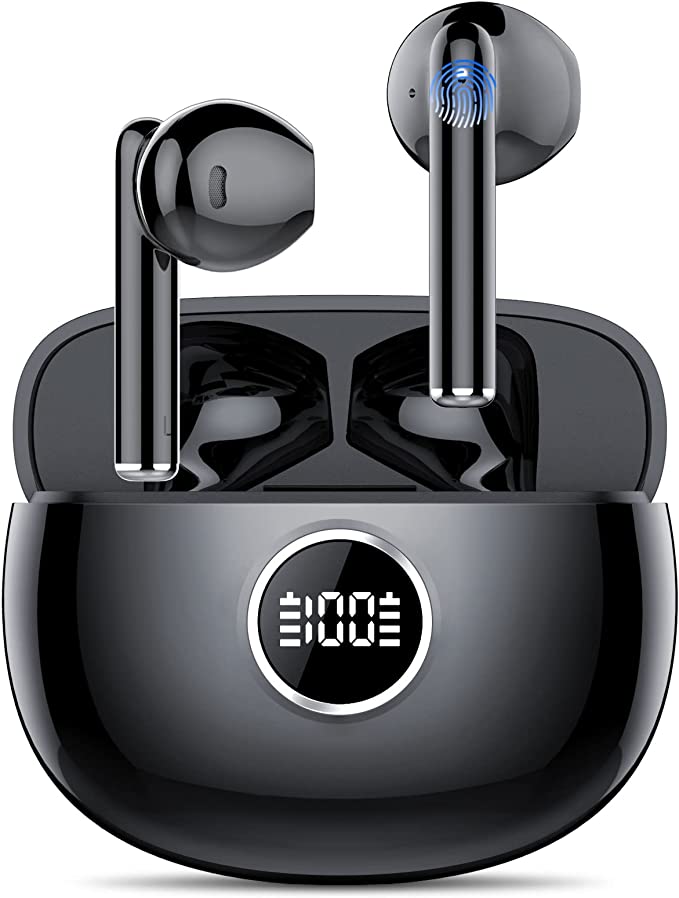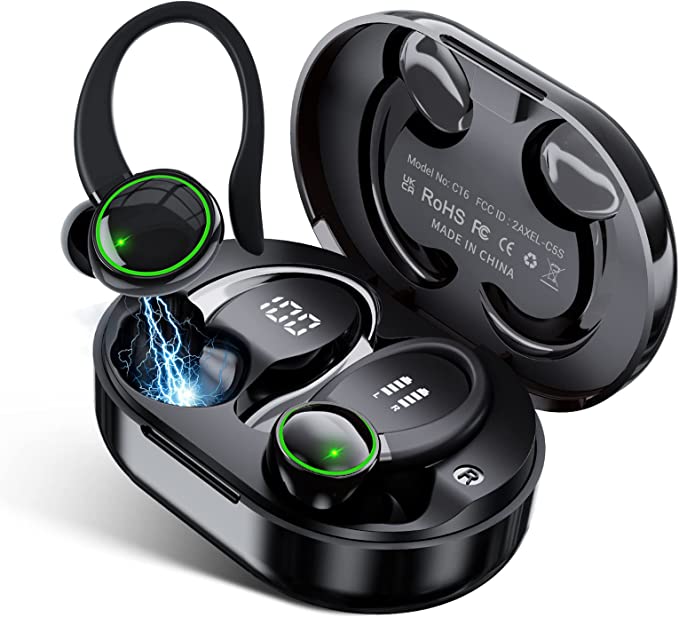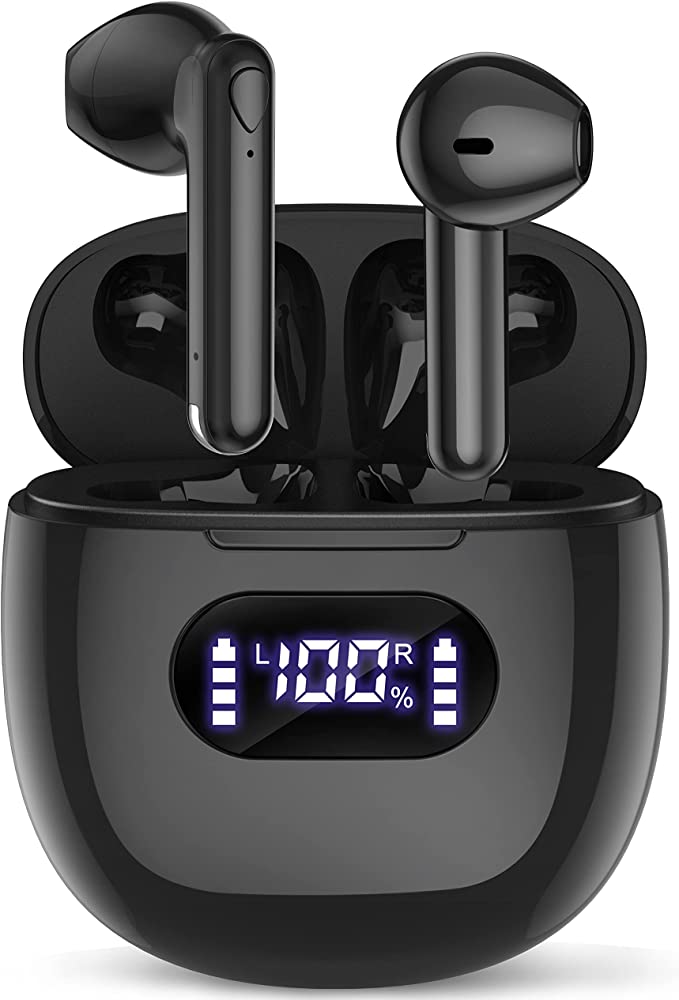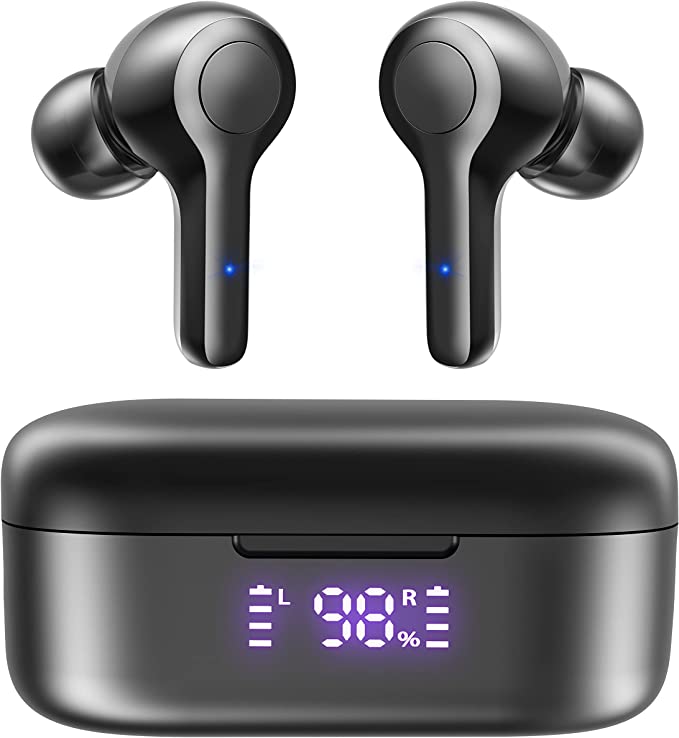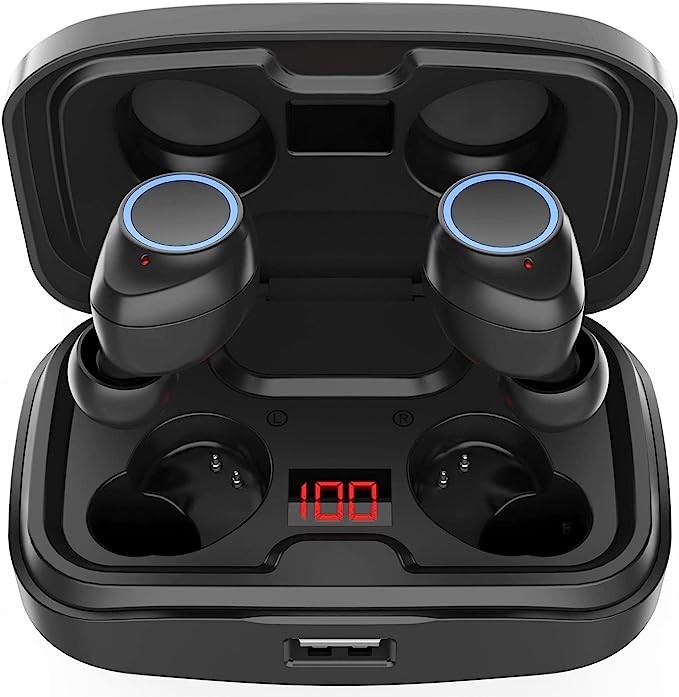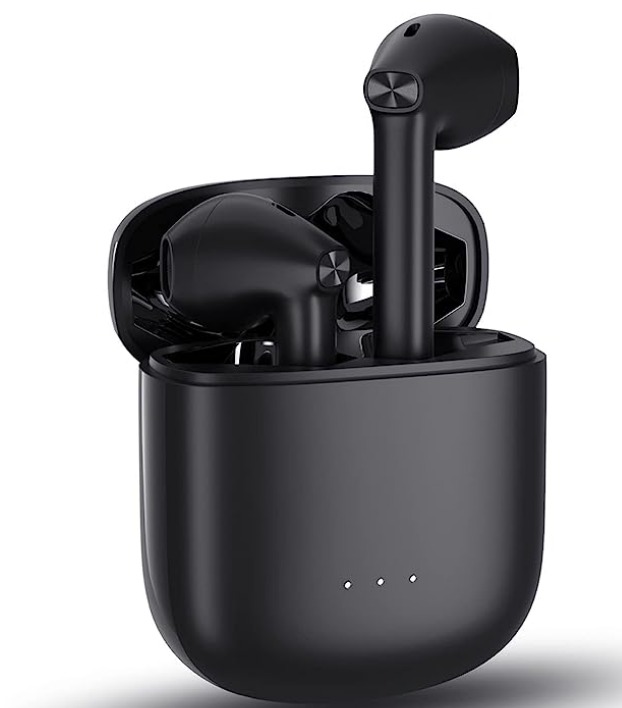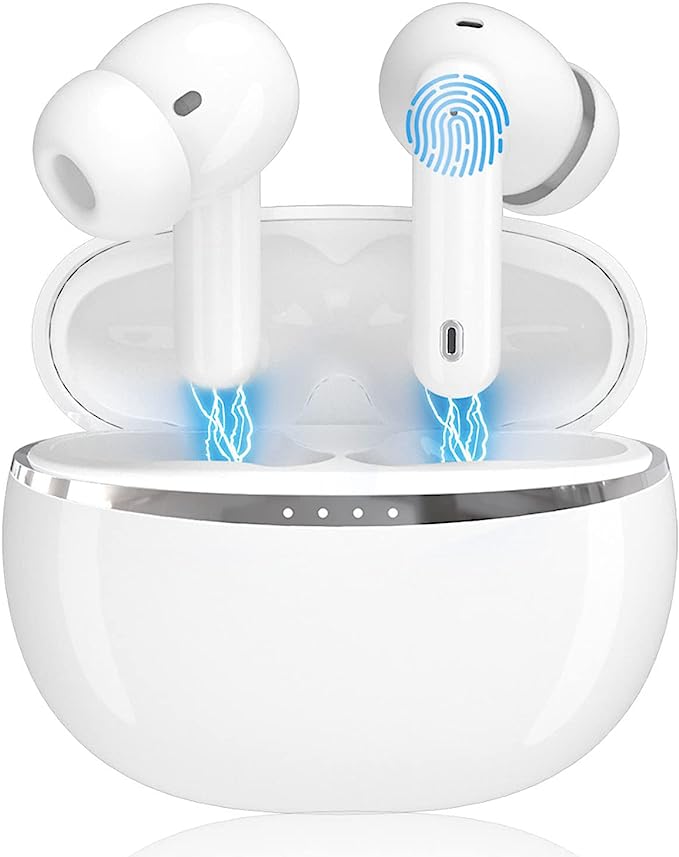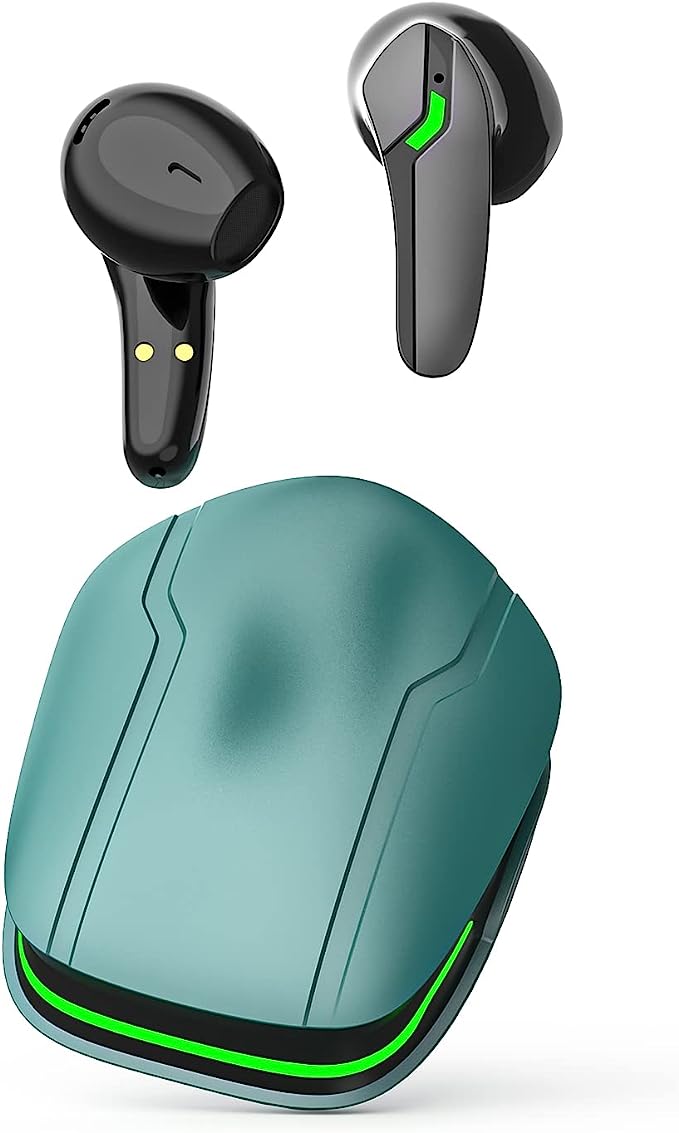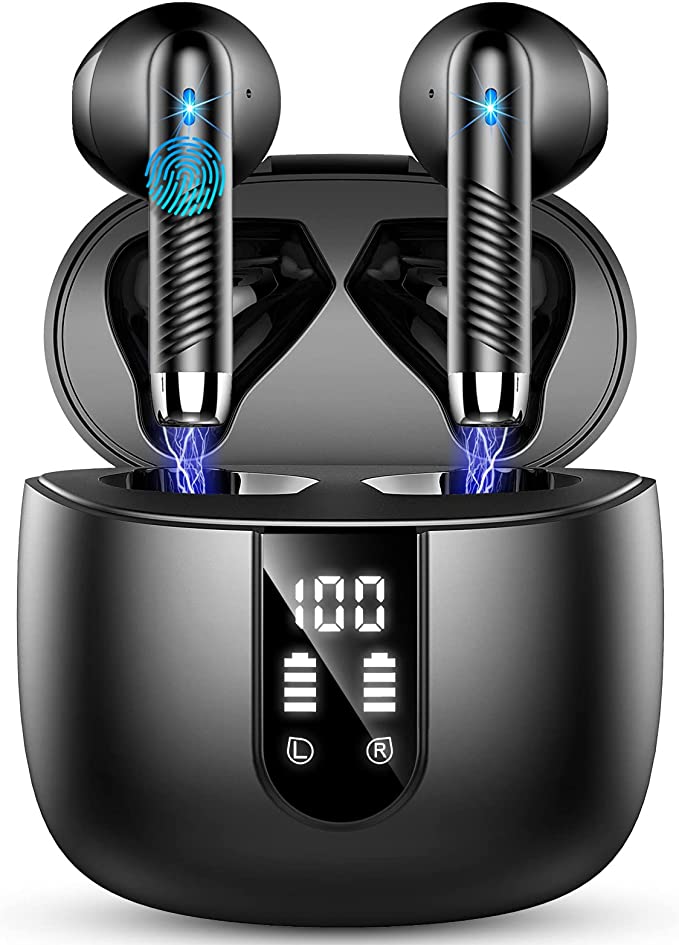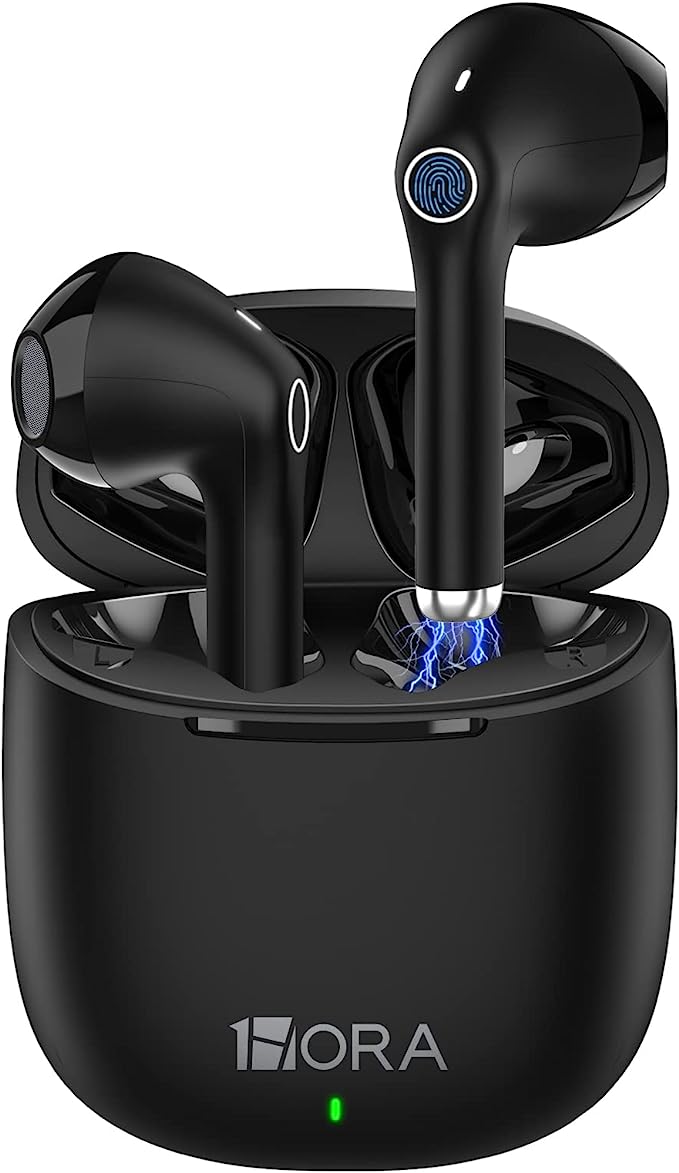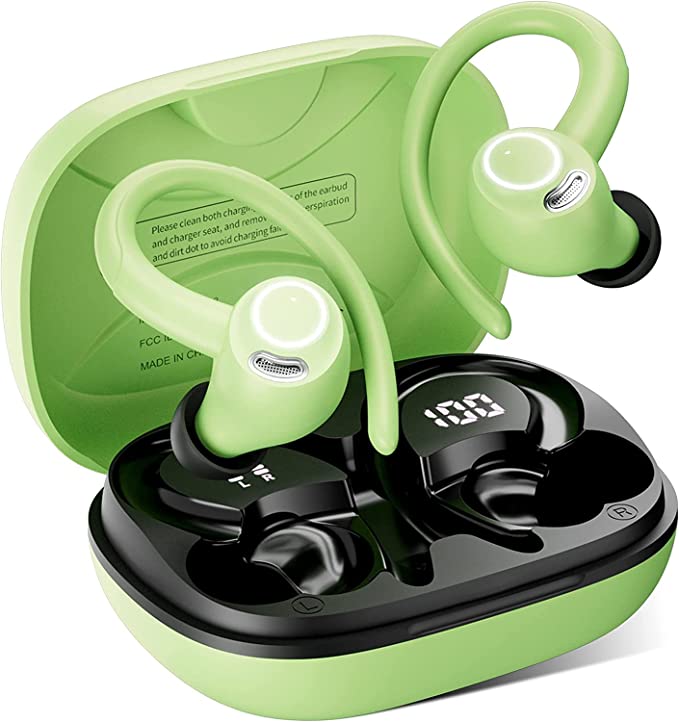uaue MD016 Wireless Earbuds: A Budget-Friendly Option with Impressive Sound
Update on June 6, 2025, 5:52 p.m.
In an age where our lives are increasingly untethered, wireless earbuds have morphed from a novel accessory into an everyday essential. They’re our companions on commutes, our partners in workouts, and our portals to a world of music, podcasts, and clear conversations. Among the myriad options available, the uaue MD016 Wireless Earbuds emerge, often with an invitingly modest price tag (around $16.99 as per their listing). But don’t let the affordability fool you; tucked within these compact earpieces is a surprising array of modern audio technology. Our journey today is to peek under the hood, to move beyond the marketing buzzwords, and to understand the genuine science and engineering that make these earbuds – and others like them – truly tick.

The Unseen Connection: Bluetooth 5.3 - The Invisible Handshake
At the core of any wireless audio experience lies Bluetooth, that ubiquitous technology named, rather charmingly, after a 10th-century Danish king, Harald Bluetooth, famed for uniting disparate Danish tribes. Just as King Harald connected people, Bluetooth technology connects our devices. The uaue MD016 earbuds boast Bluetooth 5.3, one of the more recent iterations of this standard. So, what does this version bring to your ears?
Think of Bluetooth data transmission like a highway. Older versions might have been more prone to traffic jams (interference) or had fewer lanes (lower bandwidth). Bluetooth 5.3 aims to provide a smoother, more efficient thoroughfare for your audio. This generally translates to:
- Enhanced Stability: Fewer annoying dropouts or stutters in your music or calls. The connection between your phone and the earbuds is designed to be more robust, even in environments with many wireless signals. The product information mentions a “stable connection, fast transmission,” which are key aims of the 5.3 specification.
- Improved Power Efficiency: Bluetooth 5.3 incorporates features that allow devices to communicate using less energy. This is crucial for small battery-powered devices like earbuds. It’s about sipping power, not gulping it, which can contribute to longer listening times between charges. The claim of “super-low power consumption” aligns with this.
- Streamlined Pairing: The MD016 description highlights “extremely fast pairing.” Modern Bluetooth versions have simplified the initial handshake process. These earbuds are designed to automatically connect to each other once taken from their charging case, and then offer a straightforward, often one-step, process to pair with your phone. The mention of a “twin Bluetooth 5.3 chip” could potentially contribute to this efficiency or offer benefits like more seamless switching between earbuds or managing connections more effectively, though specific implementations vary.
What this means for you: In practical terms, Bluetooth 5.3 aims to deliver a more seamless and reliable wireless audio experience. You should experience fewer interruptions, potentially longer battery life from the earbuds themselves, and a less frustrating initial setup.

The Digital Soul of Sound: Decoding “24bit” and the Curious Case of “420kHz”
Once that stable Bluetooth connection is established, how is the music itself handled? The uaue MD016 earbuds are stated to “support 24bit 420khz high-definition sound quality.” This phrase packs a lot of information, so let’s unpack it carefully.
Imagine sound in the digital world as being similar to a digital photograph. A photo is made up of tiny pixels, and the more pixels (and the more colors each pixel can display), the more detailed and nuanced the image.
-
Bit Depth (24-bit): This is somewhat analogous to the range of colors a pixel can show. In digital audio, bit depth refers to the number of bits of information used to represent each audio sample. Standard CD quality audio uses 16 bits. 24-bit audio offers a significantly larger number of possible values to describe the loudness of the sound at any given moment. This translates to a much greater dynamic range – the difference between the very quietest sounds and the very loudest sounds an audio track can contain. With 24-bit audio, there’s more “room” to capture delicate nuances, the subtle decay of a cymbal, or the faintest breath of a singer, alongside powerful crescendos, without noise becoming intrusive or loud parts sounding clipped. It’s like painting with a far richer palette of sound.
-
Sampling Rate (the “420kHz” enigma): If bit depth is about the richness of each “sound pixel,” sampling rate is about how many of these “snapshots” of sound are taken per second. It’s measured in Hertz (Hz) or kilohertz (kHz). To accurately reproduce a sound wave, the Nyquist-Shannon sampling theorem, a cornerstone of digital signal processing, states that the sampling rate must be at least twice the highest frequency present in the signal. Human hearing typically extends up to about 20,000 Hz (or 20kHz), especially in youth.
- CD quality audio uses a sampling rate of 44.1kHz (44,100 samples per second), which is more than double the 20kHz upper limit of human hearing, allowing for accurate reproduction of the audible spectrum.
- “High-Resolution Audio” often uses sampling rates like 96kHz or 192kHz.
- The claim of 420kHz (420,000 samples per second) for the MD016 is, frankly, an exceptionally high figure for consumer earbuds and far exceeds any standard audio format or widely accepted psychoacoustic benefit for direct listening. While higher sampling rates can theoretically capture ultrasonic frequencies and might have niche applications in audio processing or archival, their direct audible benefit for playback at such extreme levels is a subject of considerable debate, especially given the limitations of human hearing and the rest of the audio chain (source material, amplification, drivers).
- It’s important to approach such a high number with a degree of scientific curiosity and critical thinking. It could be a theoretical capability of a component within the earbuds, a specific marketing emphasis, or relate to an internal processing step. However, for the actual music you listen to (which is unlikely to be sourced at 420kHz), the benefits of such an ultra-high sampling rate during playback are not straightforwardly perceivable.
What this means for you: The 24-bit audio capability offers the potential for a more detailed and dynamic listening experience, assuming your audio source material is also 24-bit. Regarding the 420kHz claim, while intriguing, it’s wise to understand that the audible benefits of sampling rates far exceeding ~48kHz or ~96kHz are generally considered minimal to non-existent for most listeners and most music. The true quality will still heavily depend on the source audio, the drivers, and the overall tuning of the earbuds.

The Heartbeat of the Music: The 13mm Driver and its “Pu+Biological Composite” Diaphragm
The digital audio data, however pristine, needs to be converted back into the sound waves that reach your ears. This critical task falls to the drivers – essentially tiny loudspeakers nestled within each earbud. The uaue MD016 features “customized 13mm Pu+Biological composite driver.”
-
Driver Size (13mm): In the world of earbud drivers, 13mm is a relatively generous size. Generally, a larger driver diaphragm (the vibrating surface) has the potential to move more air. This is particularly beneficial for reproducing lower frequencies, or bass. A larger surface can create those deeper notes with more authority and less strain. The product page’s claim of “extra bass [43%+] ” (which implies a 43% increase over some unspecified baseline) is likely attributed, at least in part, to these 13mm drivers.
-
The Diaphragm’s Dance: The diaphragm is the heart of the driver. It vibrates rapidly in response to the electrical audio signal, pushing and pulling the air to create sound waves. The material of this diaphragm is crucial to its performance.
- Material Science in Your Ear (“Pu+Biological composite”): “Pu” likely refers to Polyurethane, a versatile polymer often used for its flexibility and durability. “Biological composite” is a broader term; it could refer to materials derived from natural sources (like biocellulose, sometimes used in high-end headphones for its stiffness and low internal resonance) blended with other synthetic materials. The goal of such a composite is usually to achieve a balance of desirable acoustic properties:
- Stiffness/Rigidity: To accurately reproduce high frequencies without deforming (which causes distortion).
- Lightness: To respond quickly to changes in the audio signal (good transient response, making sounds crisp and clear).
- Damping: To stop vibrating quickly once the signal stops, preventing unwanted ringing or muddiness.
The claim of “mellow vocal and surprising treble” would be the intended outcome of the acoustic properties of this specific composite diaphragm. Without detailed material specifications, it’s hard to be more precise, but the intent is clear: to engineer a diaphragm that performs well across the frequency spectrum.
What this means for you: The 13mm drivers are engineered to provide a full-bodied sound, with a particular emphasis on bass. The composite diaphragm material aims to deliver clarity in vocals and high notes. Ultimately, these physical components are the engine translating digital bits into the emotive power of music.

“Can You Hear Me Now?” – The Clarity of 4-Mic ENC (Environmental Noise Cancellation)
In our connected world, earbuds aren’t just for music; they’re vital communication tools. But making clear calls in a noisy environment – a bustling street, a crowded café, or a windy park – can be a real challenge. This is where Environmental Noise Cancellation (ENC), featured in the uaue MD016 with a 4-microphone array, comes into play.
- The Challenge: Your voice is just one sound source among many. Background noise can easily overwhelm it, making it difficult for the person on the other end of the call to understand you.
- ENC Explained: Unlike Active Noise Cancellation (ANC), which primarily aims to create a quiet listening bubble for you by actively generating anti-noise to cancel out ambient sounds, ENC is focused on making your voice clearer to the person you’re speaking with. It’s a microphone technology.
The four microphones in the MD016 likely work as a sophisticated team:- Some microphones are positioned to best capture your voice (beamforming).
- Other microphones simultaneously capture the surrounding ambient noise.
- Digital Signal Processing (DSP) algorithms then analyze these inputs. The goal is to identify and suppress the unwanted background noise while isolating and enhancing your speech. The product description states ENC “strongly eliminating external noise up to 28dB which pick up & amplify your vocals.”
- Decibels (dB) and Noise Reduction: A decibel is a logarithmic unit used to express the ratio of two values of a physical quantity, often power or intensity. In acoustics, it’s used for sound pressure level. A 28dB reduction in noise is significant. For context, a quiet library might be around 30-40dB, while normal conversation is about 60dB, and city traffic can be 80-90dB. A 20dB reduction makes a sound seem about four times quieter, so 28dB can make a substantial difference in how much background noise gets through on a call. However, such figures are usually “up to” maximums, achieved under ideal laboratory conditions with specific types of noise. Real-world performance will vary.
What this means for you: The 4-mic ENC system is designed to make your phone calls clearer for the listener, even when you’re in less-than-ideal sound environments. It helps ensure your voice is the dominant sound they hear, leading to more professional-sounding calls and less frustration from repeating yourself.
Life-Proofing Your Tunes: IPX7 Waterproofing and All-Day Power
Modern life demands resilience from our gadgets. The uaue MD016 earbuds and their charging case are described as having “IP7 watertight” protection. This most likely refers to an IPX7 rating, a standard measure of protection against water ingress.
- IP Ratings Decoded: The “IP” stands for Ingress Protection. The rating consists of two digits (or an “X”):
- The first digit (or “X”): Indicates protection against solid particles like dust. An “X” here means the device hasn’t been specifically rated for dust ingress by the manufacturer according to the IEC 60529 standard.
- The second digit (“7” in IPX7): Indicates protection against liquids. A “7” signifies that the device can withstand immersion in water up to 1 meter (about 3.3 feet) deep for up to 30 minutes.
- Real-World Resilience: This IPX7 rating makes the earbuds suitable for workouts where you’ll be sweating, for runs in the rain, or for shrugging off accidental splashes. It provides peace of mind against everyday moisture encounters. However, it’s crucial to note:
- This rating typically applies to fresh water. Saltwater, chlorinated pool water, or other liquids can be more corrosive or damaging.
- The protection isn’t necessarily permanent; seals can degrade over time.
- It’s not designed for deliberate underwater use like swimming.
- The Marathon, Not a Sprint (Battery Life): The MD016s claim “6-7 hours of listening time for a single charge,” with the charging case providing an additional “3-4 time recharges,” extending the total listening time “up to 35 hours.” These are impressive figures for budget-friendly earbuds. This longevity is largely thanks to efficient Lithium-Polymer (Li-Po) batteries, which offer a good balance of energy density (how much power they can store for their size/weight) and safety in small electronic devices. Of course, actual playtime can vary based on volume levels, the type of audio content, Bluetooth connection quality, and even ambient temperature.
- Quick Refuel (USB-C Fast Charging): The charging case is equipped with a USB-C port, which is rapidly becoming the universal standard for its reversibility and higher power capabilities. The earbuds also boast fast charging: “Just charge 10 minutes, get up to 1 hour of playtime.” This is incredibly convenient for those moments when you’re short on time but need a quick audio fix. This typically involves a higher current or voltage delivery to the battery for a short period, managed by a charge controller chip to prevent damage.
What this means for you: The IPX7 rating means you can use these earbuds more freely during exercise or in damp conditions without excessive worry. The substantial battery life and fast charging capability reduce “battery anxiety,” ensuring your audio companion is ready when you are.
Featherlight Comfort & Fingertip Control: The Little Things That Matter
Beyond the core audio and connectivity tech, the user experience is significantly shaped by comfort and ease of use.
- The 4-Gram Wonder: The product page states, “The single earbud wireless bluetooth is only 4g.” This ultra-lightweight design is a key factor in long-term wearing comfort. Heavier earbuds can cause ear fatigue or feel insecure. A lighter earbud, combined with an “ultra lightweight contoured design” that “conforms to the shape of your ear,” aims for a snug, stable fit that you might even forget you’re wearing. This is crucial for extended listening sessions or active use where you don’t want earbuds constantly shifting or falling out.
- The Magic of Touch: The MD016 earbuds “adopt intelligent touch.” This refers to capacitive touch controls, a common feature in modern earbuds. Your skin is electrically conductive. When you touch the surface of the earbud, you slightly change the electrical capacitance at that point. Sensors detect this change and translate it into commands – play/pause, skip track, adjust volume, answer calls, or activate your phone’s voice assistant. This offers a button-free, sleek interface and avoids the sometimes uncomfortable pressure of pushing physical buttons into your ear canal.
What this means for you: These design considerations directly impact how pleasant the earbuds are to use day-to-day. Lightweight construction means you can wear them for hours without discomfort, and intuitive touch controls allow for easy management of your audio and calls without fumbling for your phone.

Conclusion: The Symphony of Science in an Affordable Package
The uaue MD016 Wireless Earbuds, while positioned at an accessible price point, serve as a fascinating microcosm of the sophisticated science and engineering that underpins modern personal audio. From the intricacies of Bluetooth 5.3 ensuring a stable wireless link, to the digital audio processing aiming for 24-bit fidelity (and that attention-grabbing 420kHz figure), the electroacoustic principles at play in their 13mm composite drivers, the clever microphone arrays in their ENC system for clearer calls, the material science behind their IPX7 waterproofing, and the efficient power management of their batteries – each feature is a testament to technological advancement.
What these earbuds represent is the ongoing democratization of technology. Features that might have been exclusive to high-end devices just a few years ago are now increasingly found in more affordable options. This doesn’t mean they’ll outperform flagship products in every metric, but it does mean that a good, feature-rich audio experience is more accessible than ever.
Ultimately, understanding the science inside your gadgets, even a seemingly simple pair of earbuds, empowers you. It allows you to look past marketing jargon, appreciate the ingenuity involved, and make more informed choices about the technology that enriches your daily life. The uaue MD016, like many similar devices, reminds us that even in a small, budget-friendly package, there’s a whole symphony of science working to bring you the joy of sound.
